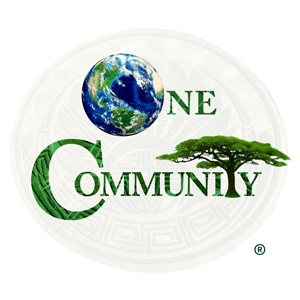lesson plan test

Lesson Plan Mindmap for “Relative & Dimensional Space” – Click to Enlarge
THESE LINKS JUMP DIRECTLY TO EACH SUBJECT ON THIS PAGE
ARTS/TRADES | ENGLISH | HEALTH | MATH | SCIENCE | SOCIAL SCIENCES | VALUES
RELATIVE & DIMENSIONAL SPACE
LESSON PLAN
This page is a free-shared lesson plan archive for teaching all educational subjects within the context and theme of “Relative and Dimensional Space.” It is purposed for use in community education environments, homeschool environments, traditional schooling environments, or as a supplemental and fun addition to any education program. As part of the complete Education for Life Program, this lesson plan is specifically designed to work in conjunction with the other primary education program components: Foundations of Teaching, Curriculum, Teaching Strategies, Learning Tools and Toys, Evaluation Model, and The Ultimate Classroom. If you’d like to learn how all these components work together, click here.
NOTE: The colors are provided as a possible linear progression (red/easiest to violet/most challenging) for people that might prefer a more linear structure. Our core philosophy is that through creativity every color can be made easy or challenging for any learning level.
RELATED PAGES
EDUCATION OVERVIEW | HOW TO USE THIS COMPONENT | OUR OPEN SOURCE PURPOSE
WAYS TO CONTRIBUTE TO EVOLVING THIS EDUCATION PROGRAM WITH US
SUGGESTIONS | CONSULTANTS | PIONEERS
ARTS AND TRADES
CLICK HERE FOR THE COMPLETE SUBJECT OUTLINE FOR ARTS & TRADES
 | TEACHING ARTS AND TRADES WITHIN THE CONTEXT OF SPACELearning about perspective in painting and drawing. Learning about landscape design and proper building arrangement, marching band movements, how to use space in dance. Exploring 2-D art vs 3-D art and design across all mediums. |
 | - Draw your favorite place and learn about how this drawing is 2 dimensional space
- Draw your favorite place from a top-down perspective, as 2 dimensional space
- Draw or paint your favorite place in 3 dimensions using shading, light, and depth
- Draw a complete real or imagined landscape in 3-D
- Design a landscape on a new planet and create a 3-D model of it
- Design a real or imagined landscape and create a 4-D model (moving parts)
- Design a landscape of a new planet for performance art and including a play or song
|
 | - Exploring graphic arts spacial relationships with magazine clippings, photography, etc.
- Exploring spatial relationships with photoshop and other 2-D computer programs
- Exploring spatial relationships in clothing: Cross Stitch, sew, quilt, yarn image, etc.)
- Exploring spatial relationships in SketchUp, Sculptris, & other 3-D modeling programs
- Exploring spatial relationships in hands-on creation with clay, wood, stone, steel, etc.
- Exploring spatial relationships in circuitry and electrical design
- Exploring spatial relationships with building and construction
- Create a completely new structure or product and detail the spatial and dimensional elements that contribute to its form and function
|
| CLICK HERE TO EMAIL US IF YOU HAVE AN IDEA TO ADD TO THIS SECTION |
ENGLISH
CLICK HERE FOR THE COMPLETE SUBJECT OUTLINE FOR ENGLISH
 | TEACHING ENGLISH WITHIN THE CONTEXT OF SPACELearning and working with space and dimensional terms (length, width, height, depth, breadth, etc.). Learning about “lects”, styles of speaking specific for particular social settings, spaces, and environments. Exploring how length and breadth of writing and literature changes them. |
 | - Learning words for different direction/size/location related concepts
- Reading & writing with words for direction/size/location related concepts
- Exploring how words start with roots and expand their meaning as their lengths expand
- Exploring & creating different types of literature in relation to their LENGTHS
- Create original work by changing length of literary forms (haiku into story & vice versa)
- Exploring the complete history of and writings about dimensional space words
- Write a paper on the description & history of dimensional words without using any of them
|
| CLICK HERE TO EMAIL US IF YOU HAVE AN IDEA TO ADD TO THIS SECTION |
HEALTH
CLICK HERE FOR THE COMPLETE SUBJECT OUTLINE FOR HEALTH
 | TEACHING HEALTH WITHIN THE CONTEXT OF SPACELearning about personal space (hygiene, arrangement, managing) and learning about the human body as your inner space (personal hygiene, healthy diet, exercises, etc.). Learning about the scientific connections between emotions (internal space) and health (external space). |
 | - Learn about your body and the body of others as yours and their personal space
- Exploration of diet, exercise, and meditation to internal and external “space” care
- “Feeling” space: run in different shapes (circles, line, zig zag etc), tracing shapes, etc.
- Controlling your energy & emotional internal space regardless of the external situation
- Exploring how changing your external situation affects your internal needs & vice versa
- Exploring studies relating emotional (internal) space and health (external) space
- Design your own tests for health correlations between internal & external environments
- Create your ultimate idea of a complete environment (internal and external) that maximizes health and vibrance
|
| CLICK HERE TO EMAIL US IF YOU HAVE AN IDEA TO ADD TO THIS SECTION |
MATH
CLICK HERE FOR THE COMPLETE SUBJECT OUTLINE FOR MATH
 | TEACHING MATH WITHIN THE CONTEXT OF SPACECalculating space and dimensions, exploring geometric figures, etc. Calculating distances to planets, ratios to and of planets to each other, time to reach the sun, distances of states, cities, countries, planets, stars, galaxies etc. Graphing in 2 and 3-D, angles, understanding metric and non-metric units of measure, etc. |
 | - Identifying and understanding basic shapes in 2-D and then 3-D
- Understand mathematical properties of different shapes (angles, proportions etc)
- Understand and using 2-D measurements and equations plus graphing in 2-D
- Measure the volume of symmetrical objects and graphing in 3-D
- Graph, understand, & be able to calculate the volume of polytopes in three dimensions
- Apply geometric concepts, conic sections, & spherical trigonometry in Euclidian space
- Design 2 & 3-D objects using fractal mathematical equations & differential & contact geometry
|
 | - Compare your size to your parents size, your bedroom size, classroom size, etc.
- Calculating how many of you it takes to equal the volume of other creatures or things
- How many of you could fit in the classroom/building/city laying down? standing up?
- Calculate size differences of your home/community/city to these in other countries
- Same calculations as above fitting into different states with & without water areas
- Same calculations as above fitting into different countries/continents/planets
- Calculate and compare different planetary orbits, masses, densities, and relative gravitational pulls on each other
|
| CLICK HERE TO EMAIL US IF YOU HAVE AN IDEA TO ADD TO THIS SECTION |
SCIENCE
CLICK HERE FOR THE COMPLETE SUBJECT OUTLINE FOR SCIENCE
 | TEACHING SCIENCE WITHIN THE CONTEXT OF SPACEHow species change over time, life cycles , and time periods of alive and extinct plants, animals, and humans, defining the age of rocks, plants, trees, etc, time zones, weather and climate changes in different periods (summer, fall, winter, spring), the lifespan of stars and planets, radioactive decay, relativity, etc, the history of science and how science has changed over time (computers, physical science, astronomy, geology, chemistry, biology, etc.). |
 | - Exploring the amount of space different things take up as they grow
- Learning about and understanding basic cell division & duplication
- Exploring space & migratory needs of adult animal & insects
- Create a visual representation/map of 1 creature’s space needs throughout its life
- Exploring how changing environmental space affects the lives of various species
- Create a map/diagram of overlapping space needs for creatures and their resources
- Create a map/diagram so show the spread of a population, virus, seeding patterns, and/or disease
|
 | - Exploring the space occupied by different types of geographic features
- Exploring the basics of astronomy and distances within our solar system
- Exploring changes in the space/sizes of earth’s geological features over time
- Exploring the different sizes and densities of elements & molecules
- Exploring the physics of motion, action/reaction, gravitational pull, etc.
- Exploring microclimates and weather in secluded spaces
- Exploring the effects and reasons for weather changes in key climate zones
|
| CLICK HERE TO EMAIL US IF YOU HAVE AN IDEA TO ADD TO THIS SECTION |
SOCIAL SCIENCES
CLICK HERE FOR THE COMPLETE SUBJECT OUTLINE FOR SOCIAL SCIENCES
 | TEACHING SOCIAL SCIENCES WITHIN THE CONTEXT OF SPACELearning about the history of early formations (first settlements, their location; first influential cities and states). Exploring the social organization of cultures including the following spacial designations: community, region, area, state, country. Learning about different types of dwelling spaces for different cultures (who shares how much space – who lives in one building/room etc). Learning how different cultures describe space and spacial concepts. |
 | - Organization of your bedroom and household layout
- Organization of your classroom/school layout
- Organization/development of your community’s layout
- Organization/development of the county’s human structures and communities
- Organization/development/legal structure of the state’s human structures & communities
- Organization/development of the country’s human structures and communities
- Organization/development of the world’s structures, communities, and boundary laws
|
 | - Comparing # of people in your house to classmates and other families worldwide
- Measure space each type of room takes up in your house & compare to other cultures
- Analyze and design a plan for improving the space-use efficiency of your community
- Dissect a city design from another culture and examine space use and efficiency
- Analyze space usage of global cultures & determine what elements maximize efficiency
- Design a maximally space efficient village for 500 people
- Design a maximally space efficient community/city for 10,000 people
|
 | - Exploring words in other languages for direction/size/location related concepts
- Write stories using words in other languages for direction/size/location related concepts
- Exploring how other cultures and languages use, perceive, & describe relative space
- Comparing cultural word choices for directions/size/location
- Exploring the complete history of and writings about dimensional space words
- Psychological & historical reasons & effects of cultures having more/less dimensional words
- Socio-linguistic study of how different dimensional words adapted from different languages
|
 | - Exploring foreign-language words for different social settings and related concepts
- Exploring how other language use different words depending on the social setting
- Exploring how other cultures and languages use, perceive, and describe society
- Exploring cultural word choices in different personal and professional situations
- Exploring the complete history of, and writings about, ‘lects’
- Exploring the psychology & history of reasons & effects of having ‘lects’
- Socio-linguistic exploration of how different ‘lects’ adapted from what languages
|
| CLICK HERE TO EMAIL US IF YOU HAVE AN IDEA TO ADD TO THIS SECTION |
VALUES
CLICK HERE FOR THE COMPLETE SUBJECT OUTLINE FOR VALUES
 | TEACHING VALUES WITHIN THE CONTEXT OF SPACESharing space with others, learning about interconnectedness, and learning strategies for positively and proactively affecting the internal and external environments of others. |
 | - Learning personal boundaries and space needs & how to communicate them effectively
- Belief systems & their effects on relationships & how you interact with your environment
- How others’ belief systems affect relationships & how people interact with their environment
- Strategies for positively affecting individual internal & external environments & relationships
- Strategies for positively affecting group internal & external environments & relationships
- Group strategies for positively affecting group environments & relationships
- Strategies for positively affecting global internal & external environments & relationships
|
| CLICK HERE TO EMAIL US IF YOU HAVE AN IDEA TO ADD TO THIS SECTION |
OTHER RESOURCES
OPEN SOURCE SUBJECT RESOURCES
OPEN SOURCE CURRICULUM OUTLINES
OPEN SOURCE TEACHING METHODOLOGY SUMMARIES
Montessori | Waldorf | Orff | Reggio | Multi-Intelligence | Bloom’s Taxonomy | Study Tech


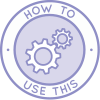

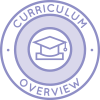
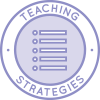
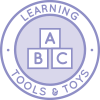
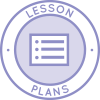
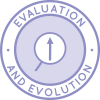
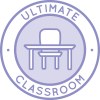
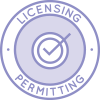

















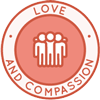

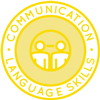


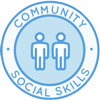

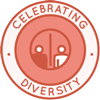

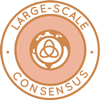
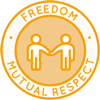
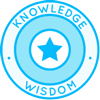
 One Community
One Community
